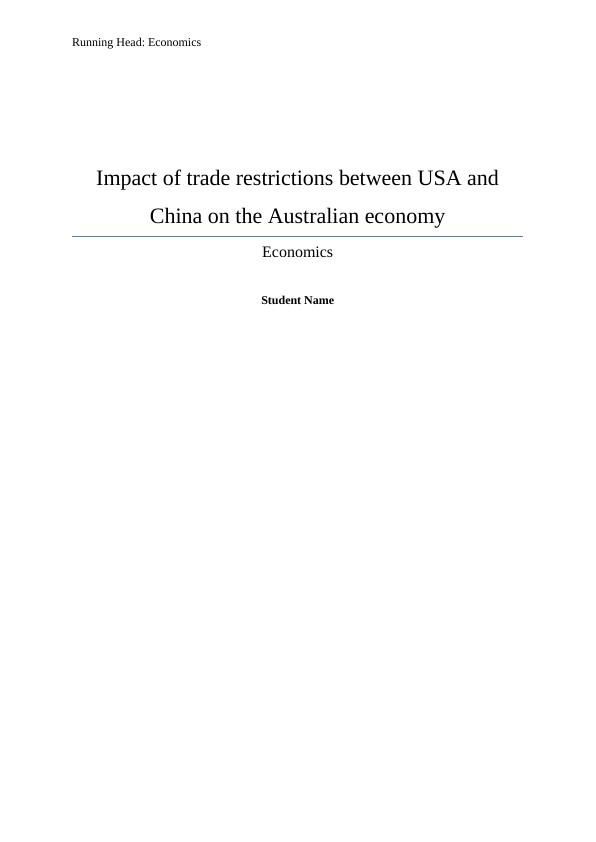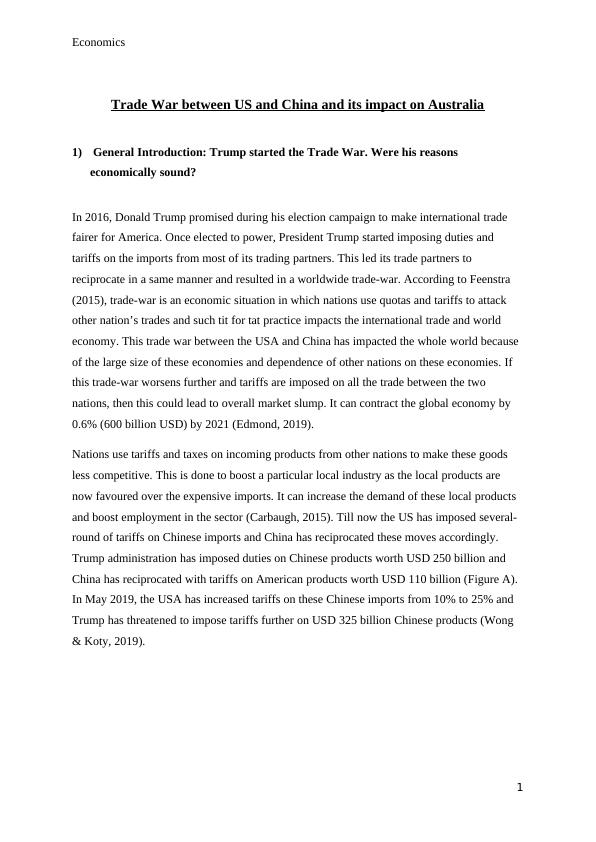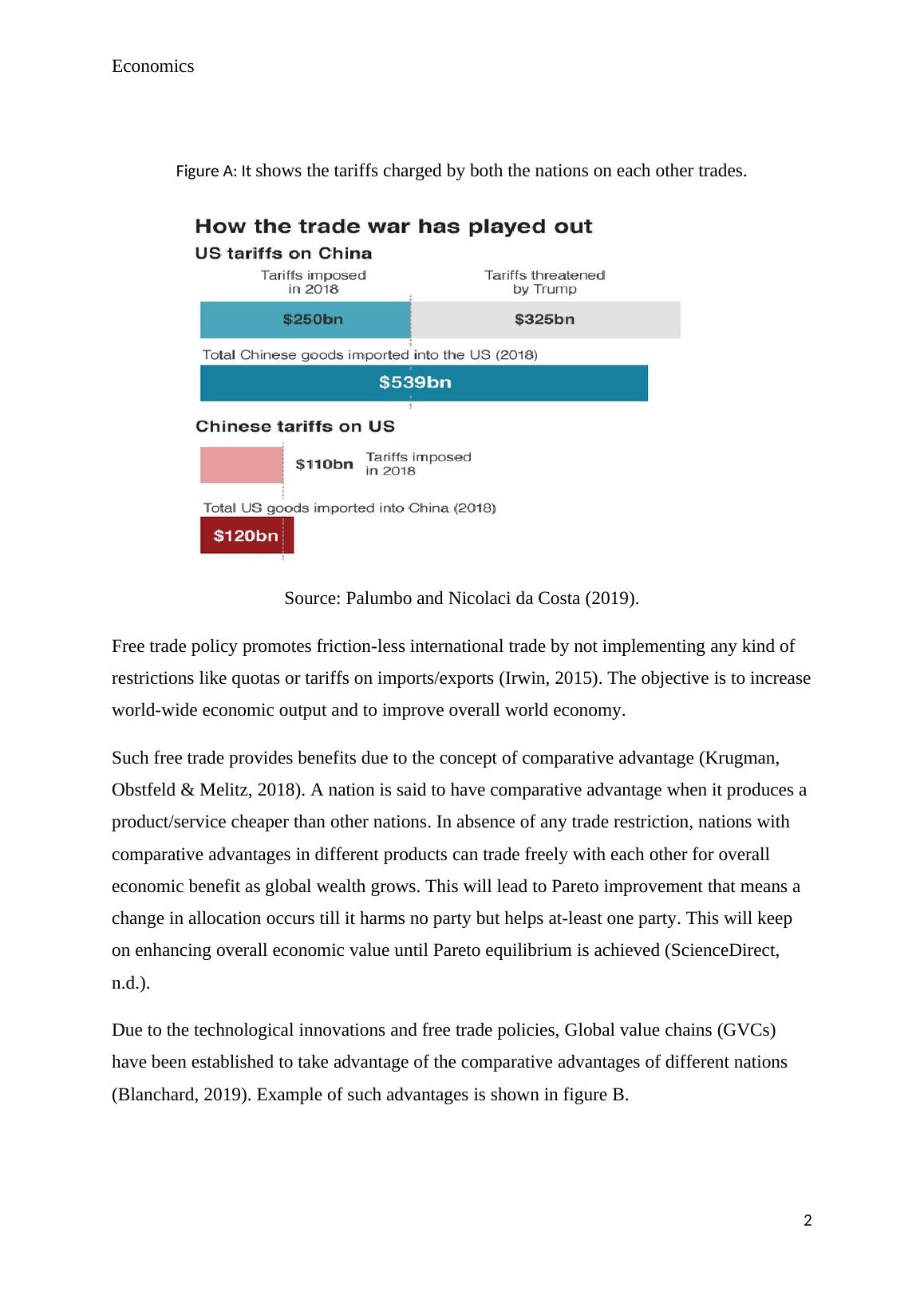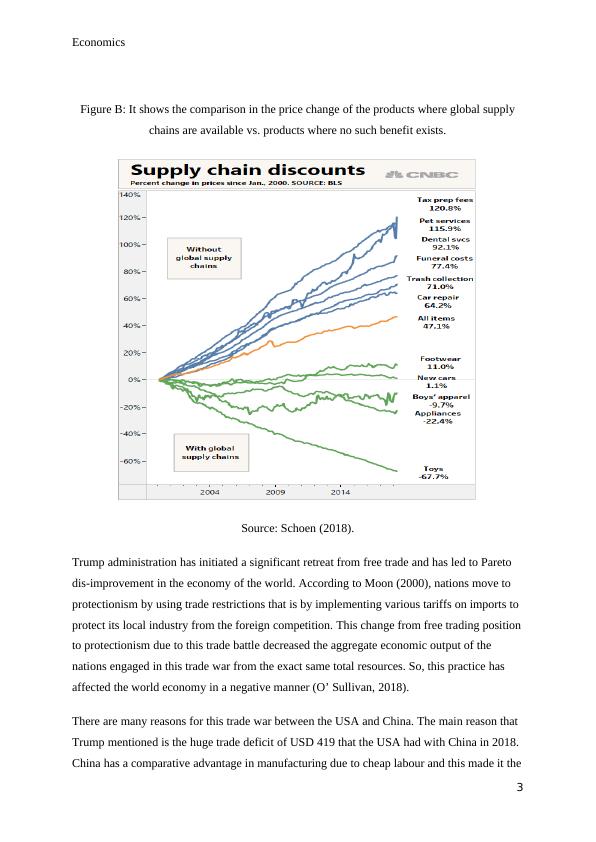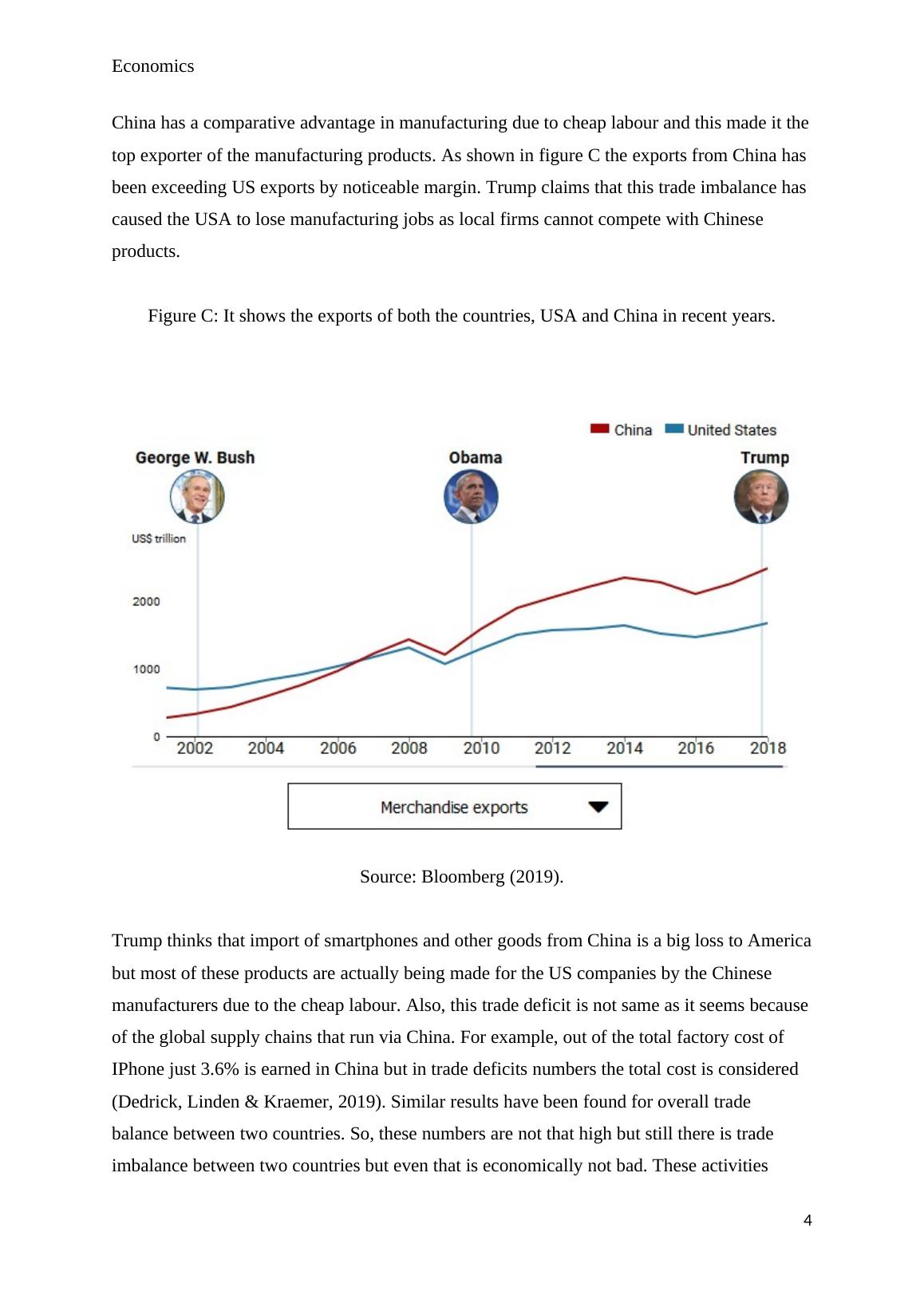Impact of trade restrictions between USA and China on the Australian economy
Introduction to the Harvard Author-Date Referencing Style
28 Pages7456 Words470 Views
Added on 2022-11-13
About This Document
This article discusses the impact of the trade war between USA and China on the Australian economy. It explores the reasons behind the trade war and how China has responded. The article also explains the concept of free trade and comparative advantage. It is relevant for students studying economics and international trade.
Impact of trade restrictions between USA and China on the Australian economy
Introduction to the Harvard Author-Date Referencing Style
Added on 2022-11-13
ShareRelated Documents
End of preview
Want to access all the pages? Upload your documents or become a member.
Trump Administration's Trade Dispute with China
|9
|2509
|99
Assignment on International Relations 1
|10
|2955
|14
Trade Restrictions on Australian Economy
|5
|1242
|25
Impact of US-China Trade War on Australian Economy
|7
|1394
|54
Impact of Trump's Tariffs on Chinese Imports on Apple Inc.
|13
|857
|399
The US-China Trade War
|15
|3841
|68

